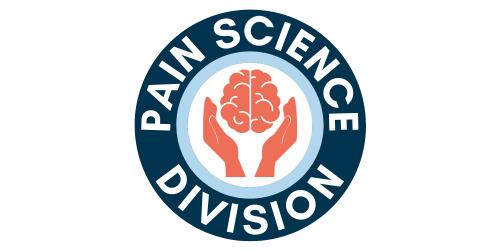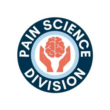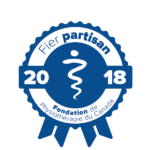The importance of pain-related fear and pain catastrophizing in physiotherapy

Over the past 20 years, the importance of psychosocial factors in determining pain-related outcomes has become well established in the pain literature [32]. Even when controlling for biomedical factors, elevated levels of anxiety, depression, pain-related fear and pain catastrophizing have been shown to be significant risk factors for prolonged disability and negative treatment outcomes [35, 18]. Past clinical research has also shown that targeted psychosocial interventions can effectively reduce these risk factors and improve treatment outcomes [19]. While psychosocial interventions for pain were historically developed by, and for, clinical psychologists, the increased prevalence of a biopsychosocial approach to pain and disability management has led other health professionals to integrate these interventions into their practice.
Pain-related fear and pain catastrophizing are two psychosocial factors that have been shown to have particular importance for physiotherapy. Pain-related fear is defined as a negative emotional reaction to pain stimuli that elicits escape or avoidance behaviour [12]. Pain catastrophizing has been conceptualized as a negative cognitive appraisal of pain-related stimuli that is characterized by rumination, magnification and helplessness [26]. Past research has linked pain-related fear and catastrophizing with measures of physical impairment [29, 30], functional performance [34, 24], pain behaviour [28]and work disability [25, 27]. Pain-related fear and pain catastrophizing have not only been shown to be important determinants of physiotherapy outcomes, but have also been shown to be modifiable through targeted treatments conducted by physiotherapists [19]. For example, a recent study conducted by Sullivan and his colleagues revealed a 50 percent improvement in rates of work disability when a targeted psychosocial intervention was delivered in concert with physiotherapy, compared to when physiotherapy was delivered alone [23]. In response to this compelling body of research, there have been increasing calls in the literature for physiotherapists to integrate targeted interventions for fear and catastrophizing into their clinical management [9, 39, 21].
The fear avoidance model of pain has been proposed as a guiding theoretical framework for addressing psychosocial risk factors in physiotherapy settings [8, 7]. The model aims to relate psychological factors, such as fear and catastrophizing, to prolonged physical disability [35, 12]. According to the model, a catastrophic interpretation of a painful event leads to increased fear, which in turn contributes to the avoidance of pain-related activities. Over time, this fear-avoidant behaviour facilitates a downward cycle that is characterized by progressive disuse, depression and disability. While some aspects of the fear avoidance model have yet to be empirically supported [37, 38], the model has served as a useful guiding framework for effective clinical assessment and management strategies.
Measuring pain-related fear and pain catastrophizing in clinical settings
Self-report questionnaires have been developed and validated to facilitate the clinical measurement of pain-related fear and pain catastrophizing. The Tampa Scale for Kinesiophobia (TSK) was designed to evaluate fear of movement and (re-) injury [11]. The scale, in its original form, contains 17 items with total scores ranging from 17 to 68. A score of 39 represents the 50th percentile score and can be used to identify individuals with an elevated risk for developing negative pain-outcomes. Recently, a revised 11-item TSK scale has been developed and shown to have comparable psychometric properties as the original, full-length version [40]. The Fear-Avoidance Beliefs Questionnaire (FABQ) is another measure of pain-related fear that may also be useful for physiotherapists working in clinical settings [36]. The FABQ contains 16 self-report items that can be separated into two subscales: fear related to work and fear related to physical activities. Total scores range from 0 to 96; a change of four points signifies a meaningful clinical improvement [36, 3]. The Pain Catastrophizing Scale is a 13-item questionnaire that has been shown to measure three dimensions of pain catastrophizing: rumination, magnification and helplessness [22]. Total scores range from 0 to 52. Past research suggests that a score of 20 represents the 50th percentile cut off score and can be used to identify individuals with elevated risk of developing negative pain outcomes. Each of the above scales have been validated in chronic and acute pain populations and used extensively in diverse clinical settings.
Physiotherapists intending to measure pain-related fear and pain catastrophizing in clinical settings may benefit from reflecting on the context in which the scales are administered. Both clinicians and patients may harbor apprehensions toward the assessment of psychosocial factors. Physiotherapists may feel that they are treading outside their scope of practice, while patients with chronic pain may be concerned about being stigmatized or labeled as malingerers. A review of the physiotherapy literature addressing psychosocial factors can guard against the former, while a non-judgmental therapeutic approach can help prevent the latter. Patient participation with assessment can be further facilitated by reassuring patients that their pain is real, and that the psychosocial questionnaires are simply a means of gaining insight into the thoughts and feelings that they associate with pain. The context in which the scales are administered will also influence their reliability. Instructions should be made clear, and questionnaires should be completed in a setting that inspires confidentiality. As with any outcome measure, data from these scales will provide the greatest clinical utility when collected at treatment onset, at its midpoint and upon treatment termination. Care should also be taken in how results from these assessments are presented to patients. Elevated scores of pain related-fear and pain catastrophizing are not grounds for discharge from physiotherapy. Rather, they should be used as criteria for implementing targeted psychosocial interventions; in fact, data from completed questionnaires can often be used as an effective means of transitioning from assessment to treatment. For example, clinicians can begin treatment by addressing questionnaire items with high scores of endorsement, and then discussing the specific contexts in which patients experience these negative thoughts or feelings. Assessing psychosocial risk factors in physiotherapy settings stands to improve both the accuracy of patient prognosis and the specificity of treatment plans.
Targeting fear and catastrophizing in clinical settings
Recent research suggests that targeted interventions delivered by physiotherapists can effectively improve levels of fear, catastrophizing and disability [8, 23, 19]. Such interventions include: education, reassurance and activity-encouragement; graded activity and graded exposure to feared movements; and thought monitoring and cognitive restructuring. These interventions have been shown to be effective when used in isolation in primary care settings or when used together in the context of a structured rehabilitation program [15, 23]. While each of the following interventions are unique, there is continuity within their underlying therapeutic philosophy. Overall, these interventions aim for active patient involvement, long-term self-management, increased physical activity and disability reduction.
Education, reassurance and activity-encouragement
Pain education delivered by physiotherapists has traditionally emphasized the importance of musculoskeletal and biomechanical factors in explaining how pain works [6]. This form of education highlights the importance of damaged tissue as the cause of pain onset and maintenance. Anatomical education, however, fails to account for the psychosocial and neurophysiological factors involved in pain and thus reinforces a potentially detrimental Cartesian understanding of pain (i.e. tissue damage causes pain). For example, past research suggests that this form of pain education may inadvertently increase patients’ levels of fear avoidant beliefs [3]. Clinicians aiming to reduce fear and catastrophizing must therefore carefully consider how their patients might interpret pain education.
Recent research suggests that neurophysiological education, reassurance and activity encouragement are interventions that can help improve chronic pain outcomes [17, 13]. Neurophysiology-based education draws on contemporary pain theory (i.e. neuromatrix and biopsychosocial models of pain) and current research findings to explain the underlying mechanisms of pain [14, 17]. This form of education focuses on the structure, function and plasticity of the nervous system in nociceptive and pain processes. In the literature, neurophysiological education is delivered via one-on-one sessions, typically takes three to four hours to complete, and is associated with improvements in levels of pain catastrophizing, physical impairment and self-report disability [16, 17].
Reassurance and activity-encouragement are quick and simple interventions that aim to provide patients with information about their pain condition and advice about how to manage chronic disability [13]. Reassurance aims to demystify and de-medicalize the patient’s pain condition by outlining the typical recovery trajectory, identifying signs and symptoms that indicate serious pathology (i.e. red flags) and differentiating pain from tissue damage. Activity encouragement aims to communicate that physical activity is safe for individuals with chronic pain and is beneficial in combating prolonged disability. Individuals with elevated levels of fear and catastrophizing may find it challenging to shift their focus from the severity of their symptoms to increasing their level of physical activity. For this reason, reassurance and activity encouragement are most beneficial when they are used in a manner that permeates therapeutic management rather than as one-off interventions [3]. Past research has administered these interventions through a wide variety of mediums, such as one-on-one sessions, information booklets, group classes and on-line forums [13]. The flexibility of these interventions makes them particularly well suited to primary care settings. Past research has shown that these interventions are effective in improving patients’ fear-avoidant beliefs, pain intensity and self-report disability [4, 1].
Graded activity and graded exposure to feared movements
Graded activity and graded exposure are behavioral interventions that aim to provide a structured framework for patients to increase their levels of physical activity. Graded activity is based on operant conditioning theory, which suggests that the consequences of past behaviours drive future actions [5]. For many individuals with chronic pain, engaging in physical activity is associated with increased levels of pain intensity. Pain, as a result, acts as a deterrent for engaging in physical activity. Graded activity aims to increase levels of physical activity, through progressive activity quotas, without increasing individuals’ levels of pain. The first step in graded activity is selecting a physical activity that is interesting, readily accessible and important for daily function (e.g. walking). Once selected, the clinician helps the patient identify their current level of tolerance by establishing the amount of activity that can be performed without significantly increasing levels of pain. Care must be taken to avoid basing current activity tolerance on pre-injury levels of physical activity; a week of recording daily logs of physical activity and pain intensity can facilitate this process. The clinician and patient then establish below-tolerance activity quotas, ensuring that the patient feels confident in their ability to achieve their goals. The patient should only complete the pre-established activity quotas, resisting the urge to continue even if they are not fatigued or do not experience increased pain. In the initial stages of graded activity it is more important that patients achieve their goals than to set quotas that stand to improve fitness levels. At the following session, the patient’s performance is evaluated and the activity quotas are either maintained or increased accordingly. By selecting quotas that the patient can perform without flaring up their condition their participation in regular physical activity is reinforced with positive feelings of accomplishment and increased self-efficacy. The clinician can further reward this behaviour by providing encouragement when activity quotas are achieved, and by reassuring patients that appropriate levels of physical activity need not cause pain. Past research has shown that graded activity can lead to long-term improvements in pain-related fear, pain intensity, activity limitations and work disability [20].
Graded exposure to feared activities is similarly structured to graded activity but focuses on levels of fear, instead of activity quota tolerance, as criteria for treatment progression [33, 2]. First, clinicians ask patients to indentify activities that are highly feared and have been previously avoided. Patients are then asked to rank these activities from least to most feared. For example, an individual who sustained a low back injury while lifting a heavy object may associate low levels of fear with bending forward to tie a shoelace and high levels of fear with shoveling snow from a driveway. Starting with the least feared activity, patients are asked to identify the anticipated consequences of participating in the activity and to rank their level of fear (from no fear (0) to most feared (10)). The patient is then asked to perform the activity and to repeat the same self-assessment. Past research suggests that patients’ levels of pain-related fear decrease as they are exposed to targeted activities [41]. The one caveat regarding the efficacy of this intervention is its limited ability to generalize to non-targeted movements [10]. It is therefore important that clinicians encourage patients to focus on movements that act as barriers to resuming activities of daily living.
Thought monitoring and cognitive restructuring
Thought monitoring and cognitive restructuring are two cognitive-behavioural interventions that aim to lower psychosocial risk factors for disability [15, 23]. Cognitive behavioural interventions are a class of treatment strategies that use structured techniques to change maladaptive thoughts, feelings and behaviours [31]. The fear avoidance model suggests that individuals with high levels of catastrophizing respond to pain stimuli with negative thoughts (e.g. “the pain is terrible and I think it’s never going to get any better”), negative feelings (e.g. “I’m afraid that I might injure myself”) and decreased physical activity (e.g. watching television when in pain) [12]. Thought monitoring helps patients become more aware of their reactions to pain, while cognitive restructuring helps them break unhelpful cognitive-behavioural patterns. Patients are first asked to document their reactions to daily painful events for a set period of time (typically a week). A logbook with four columns to describe painful events, and the associated thoughts, feelings and actions can facilitate this task. At the following session, the patient and therapist review the logbook and the patient is asked to identify any unhelpful patterns in how they respond to increased pain. The therapist can help identify problematic reactions and relate the patient’s experiences to the fear-avoidance literature. Strategies to break any unhelpful cycles are then discussed, and an implementation plan is developed. For example, the patient may be encouraged to use positive self-talk (e.g. “I know that this increase in pain is only temporary and I won’t let it get the best of me”) as a deterrent for negative pain-related thoughts and feelings, and to plan modified physical activities to avoid sedentary behaviour (e.g. “Instead of watching television when in pain, I will switch to more moderate activities before the pain becomes too severe”). Past research suggests that these interventions can effectively improve pain-related fear, activity interference and work disability [15, 23].
Conclusion
In sum, pain-related fear and pain catastrophizing have been shown to have an influential role in determining physiotherapy outcomes. Past research suggests that these psychosocial factors are associated with measures of physical impairment, pain behaviour and objective measures of disability. Self-report scales have been shown to be reliable and valid in their ability to measure these factors in clinical settings. Moreover, past research has shown that physiotherapists can effectively improve their patients’ outcomes by targeting fear and catastrophizing through clinical interventions such as education, reassurance and activity encouragement; graded activity and graded exposure to feared movements; and thought monitoring and cognitive restructuring. Targeting psychosocial interventions in physiotherapy is an important step toward the integration of a biopsychosocial model of care and stands to help alleviate the suffering and disability that is associated with chronic pain.
Acknowledgements
Dr. Timothy Wideman is a licensed physical therapist and post-doctoral fellow at Johns Hopkins University in Baltimore. His research broadly explores the different biopsychosocial aspects of pain-related disability and is generously supported through the Canadian and Quebec governments (CIHR and FRQS). His current research focuses on the relationships between pain sensitivity, psychological factors and physical activity. Dr. Wideman is also the current Chair of the Canadian Physiotherapy Association’s Pain Science Division, a position that offers him the distinct privilege of working with an incredibly dedicated group of physiotherapists toward the advancement of pain management in Canada.
Works Cited
[1] Asenlöf P, Denison E, Lindberg P. Individually tailored treatment targeting activity, motor behavior, and cognition reduces pain-related disability: a randomized controlled trial in patients with musculoskeletal pain. The journal of pain : official journal of the American Pain Society 2005;6(9):588-603.
[2] Asmundson G, Vlaeyen J, Crombez G. Understanding and treating fear of pain. New York: Oxford University Press, 2004.
[3] Burton AK, Waddell G, Tillotson KM, Summerton N. Information and advice to patients with back pain can have a positive effect. A randomized controlled trial of a novel educational booklet in primary care. Spine 1999;24(23):2484-91.
[4] Damush TM, Weinberger M, Perkins SM, Rao JK, Tierney WM, Qi R, Clark DO. Randomized trial of a self-management program for primary care patients with acute low back pain: short-term effects. Arthritis Rheum 2003;49(2):179-86.
[5] Fordyce WE, Fowler RS, Jr., Lehmann JF, Delateur BJ, Sand PL, Trieschmann RB. Operant conditioning in the treatment of chronic pain. Arch Phys Med Rehabil 1973;54(9):399-408.
[6] Forssell MZ. The Swedish Back School. Physiotherapy 1980;66(4):112-4.
[7] George SZ, Bialosky JE, Fritz JM. Physical therapist management of a patient with acute low back pain and elevated fear-avoidance beliefs. Physical therapy 2004;84(6):538-49.
[8] George SZ, Fritz JM, Bialosky JE, Donald DA. The effect of a fear-avoidance-based physical therapy intervention for patients with acute low back pain: results of a randomized clinical trial. Spine 2003;28(23):2551-60.
[9] George SZ, Zeppieri G, Cere AL, Cere MR, Borut MS, Hodges MJ, Reed DM, Valencia C, Robinson ME. A randomized trial of behavioral physical therapy interventions for acute and sub-acute low back pain (NCT00373867). Pain 2008;140(1):145-57.
[10] Goubert L, Francken G, Crombez G, Vansteenwegen D, Lysens R. Exposure to physical movement in chronic back pain patients: no evidence for generalization across different movements. Behaviour research and therapy 2002;40(4):415-29.
[11] Kori S, Miller R, Todd D. Kinesiophobia: A new view of chronic pain behavior. Pain Management 1990(Jan):35-43.
[12] Leeuw M, Goossens ME, Linton SJ, Crombez G, Boersma K, Vlaeyen JW. The fear-avoidance model of musculoskeletal pain: current state of scientific evidence. Journal of behavioral medicine 2007;30(1):77-94.
[13] Liddle SD, Gracey JH, Baxter GD. Advice for the management of low back pain: a systematic review of randomised controlled trials. Manual therapy 2007;12(4):310-27.
[14] Melzack R. From the gate to the neuromatrix. Pain 1999;Suppl 6:S121-6.
[15] Moore JE, Von Korff M, Cherkin D, Saunders K, Lorig K. A randomized trial of a cognitive-behavioral program for enhancing back pain self care in a primary care setting. Pain 2000;88(2):145-53.
[16] Moseley GL. Evidence for a direct relationship between cognitive and physical change during an education intervention in people with chronic low back pain. European journal of pain (London, England) 2004;8(1):39-45.
[17] Moseley GL, Nicholas MK, Hodges PW. A randomized controlled trial of intensive neurophysiology education in chronic low back pain. The Clinical journal of pain 2004;20(5):324-30.
[18] Pincus T, Burton AK, Vogel S, Field AP. A systematic review of psychological factors as predictors of chronicity/disability in prospective cohorts of low back pain. Spine 2002;27(5):E109-20.
[19] Staal JB, Hlobil H, Köke AJ, Twisk JW, Smid T, van Mechelen W. Graded activity for workers with low back pain: who benefits most and how does it work? Arthritis Rheum 2008;59(5):642-9.
[20] Staal JB, Hlobil H, Twisk JW, Smid T, Köke AJ, van Mechelen W. Graded activity for low back pain in occupational health care: a randomized, controlled trial. Ann Intern Med 2004;140(2):77-84.
[21] Sullivan M, Tanzer M, Stanish W, Fallaha M, Keefe FJ, Simmonds M, Dunbar M. Psychological determinants of problematic outcomes following Total Knee Arthroplasty. Pain 2009;143(1-2):123-9.
[22] Sullivan MJ. The Pain Catastrophizing Scale: Development and Validation. Psychological Assessment 1995.
[23] Sullivan MJ, Adams H, Rhodenizer T, Stanish WD. A psychosocial risk factor–targeted intervention for the prevention of chronic pain and disability following whiplash injury. Physical therapy 2006;86(1):8-18.
[24] Sullivan MJ, Rodgers WM, Wilson PM, Bell GJ, Murray TC, Fraser SN. An experimental investigation of the relation between catastrophizing and activity intolerance. Pain 2002;100(1-2):47-53.
[25] Sullivan MJ, Stanish WD. Psychologically based occupational rehabilitation: the Pain-Disability Prevention Program. The Clinical journal of pain 2003;19(2):97-104.
[26] Sullivan MJ, Thorn B, Haythornthwaite JA, Keefe F, Martin M, Bradley LA, Lefebvre JC. Theoretical perspectives on the relation between catastrophizing and pain. The Clinical journal of pain 2001;17(1):52-64.
[27] Sullivan MJ, Ward LC, Tripp D, French DJ, Adams H, Stanish WD. Secondary prevention of work disability: community-based psychosocial intervention for musculoskeletal disorders. Journal of occupational rehabilitation 2005;15(3):377-92.
[28] Thibault P, Loisel P, Durand MJ, Catchlove R, Sullivan MJ. Psychological predictors of pain expression and activity intolerance in chronic pain patients. Pain 2008;139(1):47-54.
[29] Thomas JS, France CR. Pain-related fear is associated with avoidance of spinal motion during recovery from low back pain. Spine 2007;32(16):E460-6.
[30] Thomas JS, France CR, Lavender SA, Johnson MR. Effects of fear of movement on spine velocity and acceleration after recovery from low back pain. Spine 2008;33(5):564-70.
[31] Turk DC. Cognitive-behavioral approach to the treatment of chronic pain patients. Regional anesthesia and pain medicine 2003;28(6):573-9.
[32] Turk DC, Okifuji A. Psychological factors in chronic pain: evolution and revolution. Journal of consulting and clinical psychology 2002;70(3):678-90.
[33] Vlaeyen JW, de Jong J, Geilen M, Heuts PH, van Breukelen G. The treatment of fear of movement/(re)injury in chronic low back pain: further evidence on the effectiveness of exposure in vivo. The Clinical journal of pain 2002;18(4):251-61.
[34] Vlaeyen JW, Kole-Snijders AM, Boeren RG, van Eek H. Fear of movement/(re)injury in chronic low back pain and its relation to behavioral performance. Pain 1995;62(3):363-72.
[35] Vlaeyen JW, Linton SJ. Fear-avoidance and its consequences in chronic musculoskeletal pain: a state of the art. Pain 2000;85(3):317-32.
[36] Waddell G, Newton M, Henderson I, Somerville D, Main CJ. A Fear-Avoidance Beliefs Questionnaire (FABQ) and the role of fear-avoidance beliefs in chronic low back pain and disability. Pain 1993;52(2):157-68.
[37] Wideman TH, Adams H, Sullivan MJL. A prospective sequential analysis of the fear-avoidance model of pain. Pain 2009.
[38] Wideman TH, Sullivan MJL. Wideman and Sullivan Response to Letter to Editor by Vlaeyen et al. Pain 2009;146:222-23.
[39] Woby SR, Roach NK, Urmston M, Watson PJ. Outcome following a physiotherapist-led intervention for chronic low back pain: the important role of cognitive processes. Physiotherapy 2008;94:115-24.
[40] Woby SR, Roach NK, Urmston M, Watson PJ. Psychometric properties of the TSK-11: a shortened version of the Tampa Scale for Kinesiophobia. Pain 2005;117(1-2):137-44.
[41] Woods MP, Asmundson GJ. Evaluating the efficacy of graded in vivo exposure for the treatment of fear in patients with chronic back pain: a randomized controlled clinical trial. Pain 2008;136(3):271-80.



